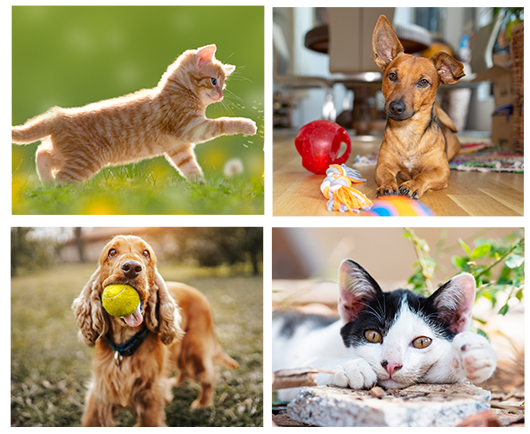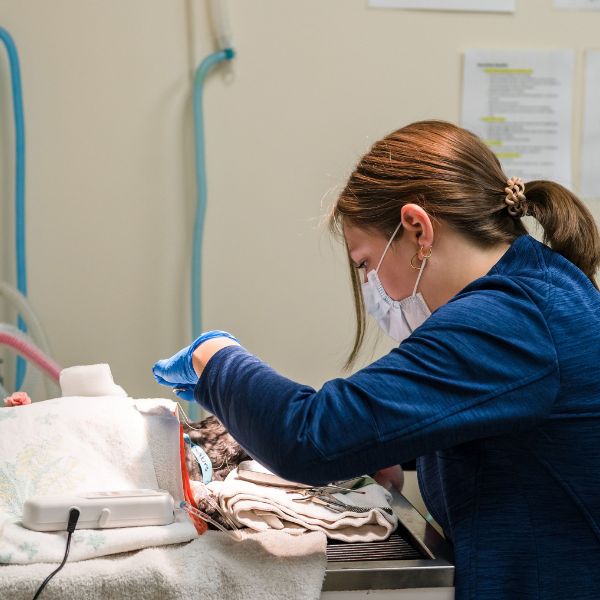Pet Dentistry
Pet Dentistry in Toledo, OH
Services offered include but are not limited to: Oral examinations under anesthesia, diagnosis and treatment of periodontal disease, digital X-rays, tooth extractions, polishing, irrigation, fluoride application, and more.
WHAT DOES A DENTAL PROCEDURE INCLUDE?
Each dental procedure starts out with careful pre-operative testing, attentive anesthesia, and a thorough oral exam. New techniques and anesthetic agents have made today’s procedures much safer than in the past, but be aware that no surgical or anesthetic procedure is without risk.
To reduce that risk as much as possible, we perform a pre-operative lab evaluation. Your pet will have the latest technology monitoring them under anesthesia. Heart rate (EKG), blood oxygenation (pulse oximeter), blood pressure, and respiration will all be continually evaluated by our licensed technicians during surgery.
During the exam, we check under the gum line and examine each tooth for fractures or injury, and X-ray any potential problem areas. We then scale and polish the teeth while your pet is under anesthesia and can perform surgical extractions if necessary.
Generally, all dental procedure patients go home the same evening. At the time of check-in, we will give a specific release time so that a surgery technician can review all of your pet’s at-home instructions and answer any questions you may have. We also like to send home before and after photos so you can see the difference a dental procedure can make.
SIGNS OF PERIODONTAL DISEASE…
Signs to watch out for that could indicate periodontal disease include:
- Bad Breath
- Bleeding Gums
- Loose Teeth
- Tooth Loss
- Ulcers in the mouth
- Gum Recession
- Poor Appetite
The first step is to call us to set up a dental exam. One of our experienced veterinarians will take a thorough look into your pet’s mouth and check for any signs of problems. Based on their findings, they will grade/stage your pet’s oral health. There are four grades/stages that a pet’s mouth can be placed in, one being the healthiest and four having the most advanced stages of Periodontal Disease.


IF YOUR PET SHOWS SIGNS OF PERIODONTAL DISEASE…
Signs to watch out for that could indicate periodontal disease include:
- Bad Breath
- Bleeding Gums
- Loose Teeth
- Tooth Loss
- Ulcers in the mouth
- Gum Recession
- Poor Appetite
The first step is to call us to set up a dental exam. One of our experienced veterinarians will take a thorough look into your pet’s mouth and check for any signs of problems. Based on their findings, they will grade/stage your pet’s oral health. There are four grades/stages that a pet’s mouth can be placed in, one being the healthiest and four having the most advanced stages of Periodontal Disease.

OTHER ORAL DISEASES
In addition to periodontal disease, pets can also experience these oral problems if they do not receive routine dental care:
THE FOUR GRADES/STAGES OF DENTAL DISEASE
Pets who come in for a dental exam get a thorough look at their mouths. They are checked for any signs of problems, and then based on the findings are put into a grade/stage. Look below to read more about the different stages.
Grade One
- Visible plaque accumulation (Calculus)
- Gum line is red & inflamed (Gingivitis)
- No tissue attachment loss
- Normally with a proper dental cleaning followed up by routine dental care at home, the damage can usually be reversed
Grade Two
If gingivitis goes untreated the mouth can then progress to Grade II Dental Disease.
- Swelling and recession of the gums
- There is up to 25% tissue attachment loss
- Moderate amount of calculus accumulation and gums usually bleed when probed
- In cats, resorptive lesions can be seen at this stage
Grade Three
- Moderate periodontitis present
- Heavy amount of calculus on the teeth
- Gingivitis is present
- Up to 50% of tissue attachment loss
- Some mobility of the teeth
- Roots may be exposed due to severe gum recession
Grade Four
This is the most advanced stage of periodontal disease.
- Severe infection around teeth
- Heavy calculus accumulation
- Abscessed teeth
- Sometimes blood or puss can be seen around the gum lines
- Greater than 50% tissue attachment loss
- Severe mobility of the teeth



